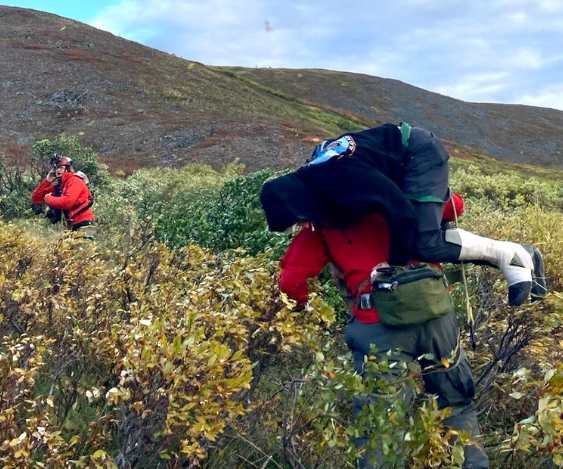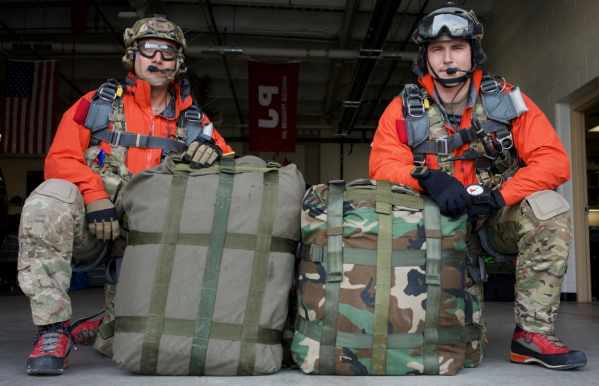CAMP DENALI, Alaska—Airmen with the Alaska Air National Guard’s 210th, 211th and 212th Rescue Squadrons rescued a pilot involved in a plane crash near Tatlanika Creek, southwest of Fairbanks, Alaska, June 30.
The 11th Air Force Rescue Coordination Center was notified by the Federal Aviation Administration at 4:39 a.m. that an aircraft flying from Coldfoot to Fairbanks on a multi-location route was overdue when it did not land in Fairbanks at the time scheduled in the flight plan submitted by the pilot.
|
|
“He was flying with another aircraft when he had some kind of mechanical issue,” said Senior Master Sgt. Robert Carte, the superintendent of the 11th Air Force Rescue Coordination Center. “They lost contact, but didn’t actually see him go down.”
The Alaska Air National Guard’s 176th Wing search-and-rescue duty officer accepted the mission at 7:24 a.m.
“Between the first notification and accepting the mission, there was a lot of coordination going on between the FAA and the RCC about checking possible airfields that the pilot may have diverted to,” Carte explained.
At 8 a.m., the 11th Air Force RCC requested additional support from the Civil Air Patrol out of Fairbanks.
“After getting a crew together, we plotted everything on the map, his route of flight, alternate airfields he had listed, and called the airfields to see if he was on the ground there,” said Maj. Brad Sipperley, commander for the 9th Composite Operations Squadron, Civil Air Patrol. “They all called back and said he wasn’t there.”
At 9 a.m., a HH-60 Pave Hawk helicopter from the 210th Rescue Squadron with a Guardian Angel pararescue team from the 212th Rescue Squadron took off from Joint Base Elmendorf-Richardson. An HC-130 “King” aircraft from the 211th Rescue Squadron, also with a team of Guardian Angels, departed JBER at 9:30 a.m.
Joining in the search for the missing pilot, the CAP launched two planes from Fairbanks, said Sipperley.
“At about 9:45 a.m., the air traffic began to increase in the area,” said Carte, speaking about the search area along the flight path of the missing pilot. “The FAA began to receive airborne reports of an emergency locator transmitter signal.”
Unlike the newer beacons that transmit on the 406 MHz wavelength and are picked up by satellites monitored by the U.S. Mission Control Center in Suitland, Md., the older ELTs rely on aircraft flying above to pick up their signal, explained Carte.
At 1 p.m., the crew of the HC-130 “King” aircraft spotted the pilot on the ground near Tatlanika Creek, southwest of Fairbanks.
“The pilot signaled the HC-130 with a signal mirror and an orange panel,” Carte said. “They actually had visual confirmation of him before they were able to home in on the ELT signal.”
At 1:33 p.m., the HH-60 Pave Hawk helicopter landed at the site of the crash and extracted the pilot. The pilot was then flown to Fairbanks Memorial Hospital and released to medical staff at 2 p.m.
“In the case of this guy, he had a survival kit and was prepared, but there’s just no substitute for having a 406 beacon to let the RCC know you are in distress,” Carte said. “The older style ELT is not monitored by satellite, so unless someone actually sees where you crash, the response for a 121.5 ELT will be significantly delayed until airborne audible reports can be correlated with an overdue aircraft.”
The Alaska Air National Guard’s 210th, 211th and 212th Rescue Squadrons were credited with one save for this mission.




